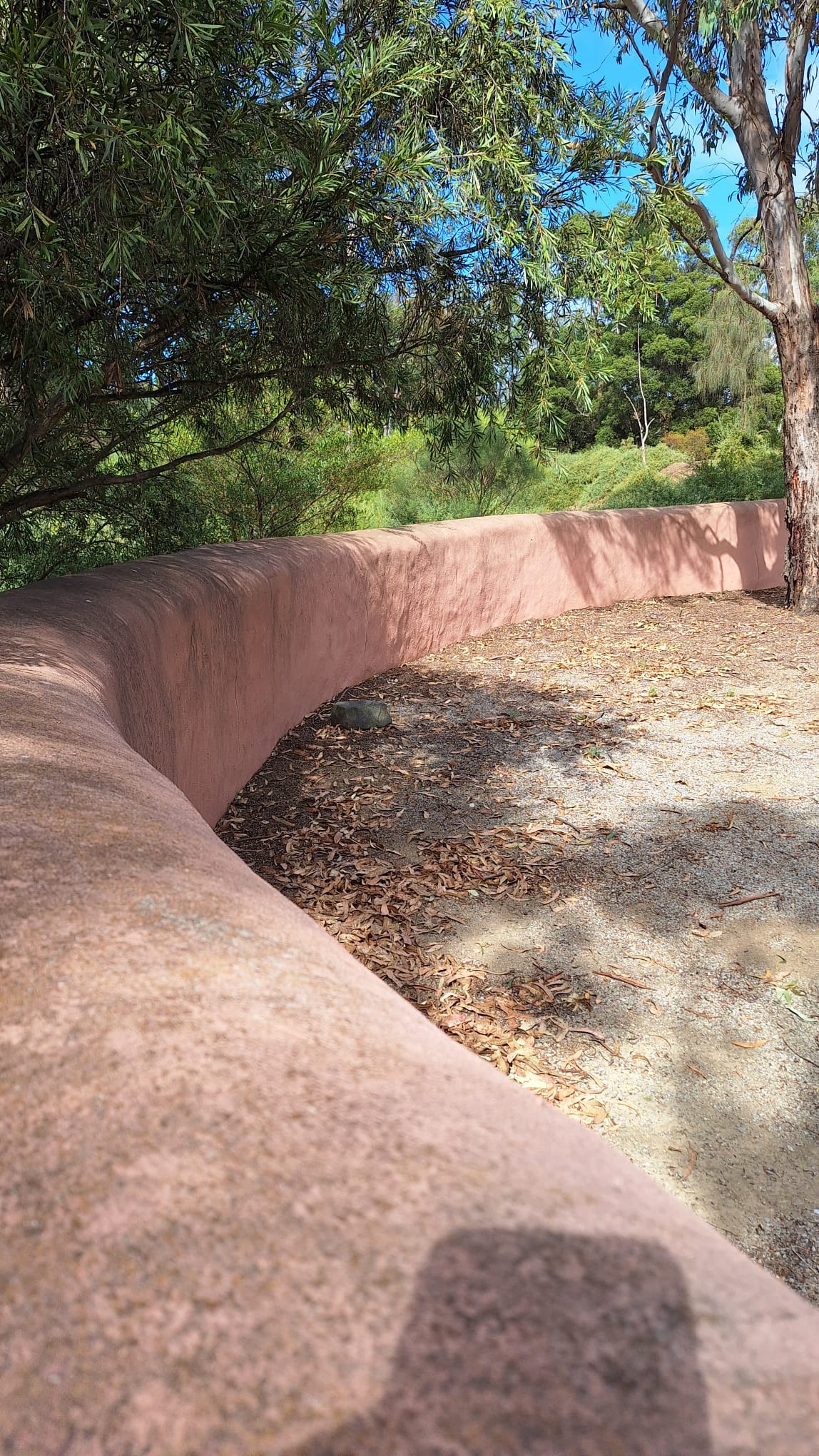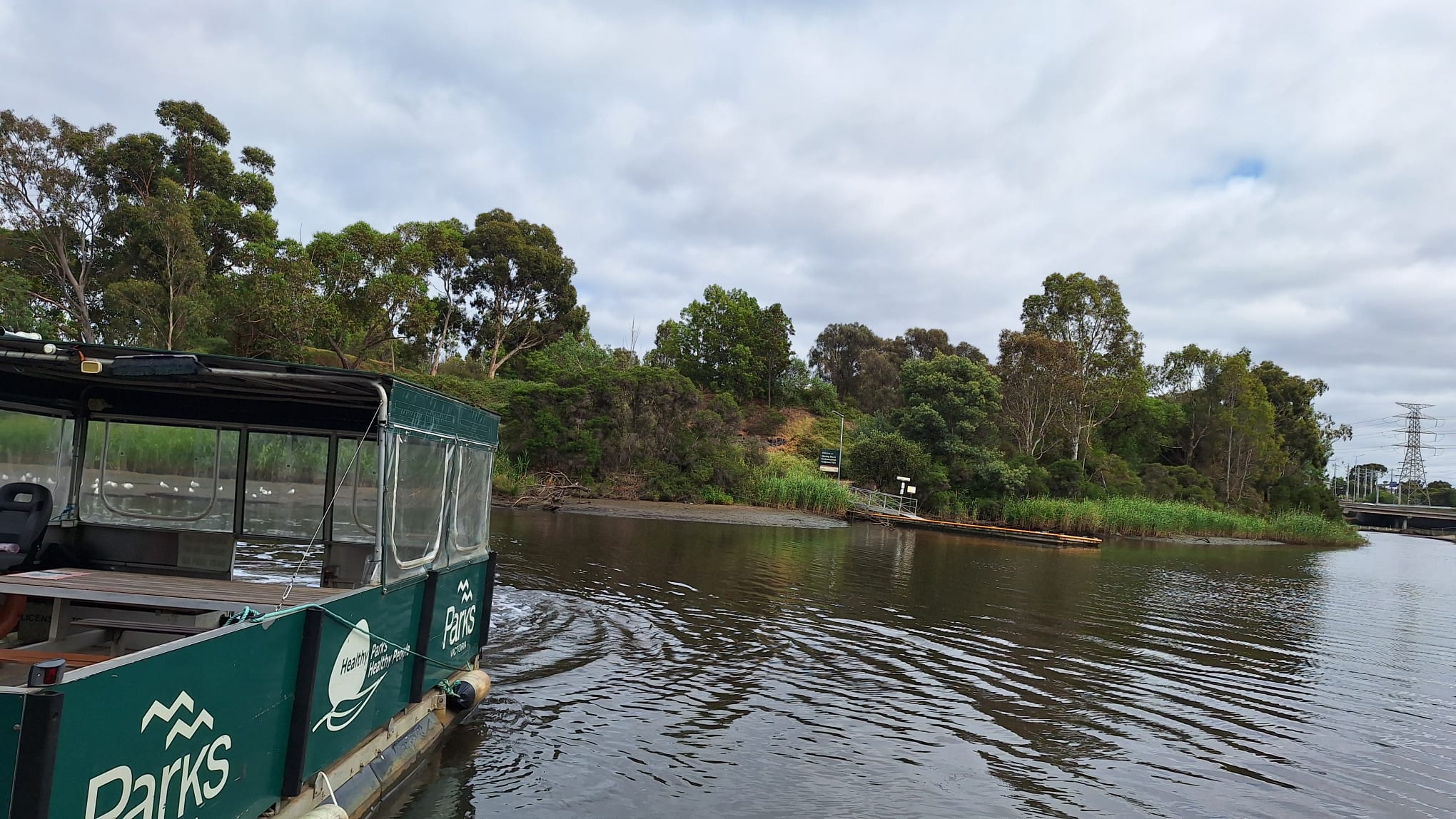How many people have had the chance to discover Herring Island? Not many it seems. But a few more of us have now. On a fresh morning in late February, a group of enthusiastic adventure seekers from Blind Sports and Recreation Victoria, had the opportunity to explore Herring Island. The island is nestled within an Aboriginal cultural landscape in the traditional country of the Wurundjeri People. The man-made island situated on the Birrarung “ Yarra River” is only 4 km from the bustling central business district of Melbourne.
Our trusty guides
Our guides were two park rangers, Georgia and John from Parks Victoria, and a volunteer named Doug. The only way to get to the island is by punt. With Georgia’s capable seawoman ship, she skilfully drove the punt, ferrying us across the tranquil waters of the Yarra River in two groups of ten. The journey was short, only about five minutes to the island’s jetty.
The unique sculptures
As well as an abundance of native flora and fauna, the island is known for its amazing sculptures, an innovation by Parks Victoria and Maudie Palmer, an Australian modern and contemporary visual artist. In 1996, together, they developed the concept for environmental sculpture park. Over the next five years, nine unique sculptures were added to the landscape.
After disembarking the punt, it was time to start the sculpture trail walk. The trails that meander and loop around the island were easily accessible with only the occasional moderately steep incline. Perfect for our group. It took about two hours to complete the walk which gave us plenty of time to stop, enjoy, and learn about each sculpture, as well as the flora, fauna and history of the area.
The birds and vegetation
Our first stop was at a great vantage point overlooking the Yarra River. The tide was low, so there was an abundance of water birds such as seagulls, dusky moorhens, ibises and cormorants on the mud flats taking in the cool morning air. Vegetation on the island consists of native and exotic species, many of which have been planted over the past 60 years.
The history
Doug took out his trusty notes and gave us a brief history lesson. Herring Island was originally a quarry in the 1800s. In 1928, engineers redirected the river’s course by excavating a new path through the disused basalt quarry in Richmond, This changed the flow of the river which hopefully would mitigate flood risks. Despite these measures, the island faced its greatest challenge in 1934 when the region experienced its largest recorded flood, submerging Herring Island entirely. Following the flood, levee banks were built and community re-vegetation projects were initiated.
The sculptures
Doug also explained each sculpture and offered us the opportunity to feel the textures of the natural materials that were used in each piece of work. The sculptures, all developed by Australian environmental artists were big, fascinating and each one had a story to tell.. Bluestone, limestone, wood, sandstone, granite, Red gums and other native plants and materials collected from local and regional areas in Victoria were used to create each statue.
Lunch at Kanteen
After the discovery walk, we enjoyed lunch and camaraderie at the Kanteen cafe nestled on the banks of the Yarra River overlooking Herring Island.
For more information about Herring Island and the sculpture trail, go to
https://www.parks.vic.gov.au/places-to-see/parks/herring-island-environmental-sculpture-park
Thanks to Parks Victoria, City of Stonnington and Miriam from Blind Sports and Recreation Victoria (BSRV) for organising this amazing day out!
Also, thanks to Joanna Lay, my support worker and friend for taking the great photos.













2 Responses
It looks amazing Annette. I’ll add it to my ‘sites to do’ list. I’ve walked past it on the Main Yarra Trail many times and thought it was owned by one of the private school rowing clubs dotted along the Birrarung.
Hi Shane, Yes, it’s a definite must-do. There is even an art gallery on the island that is only open on the weekends. Hope you get to go there soon.